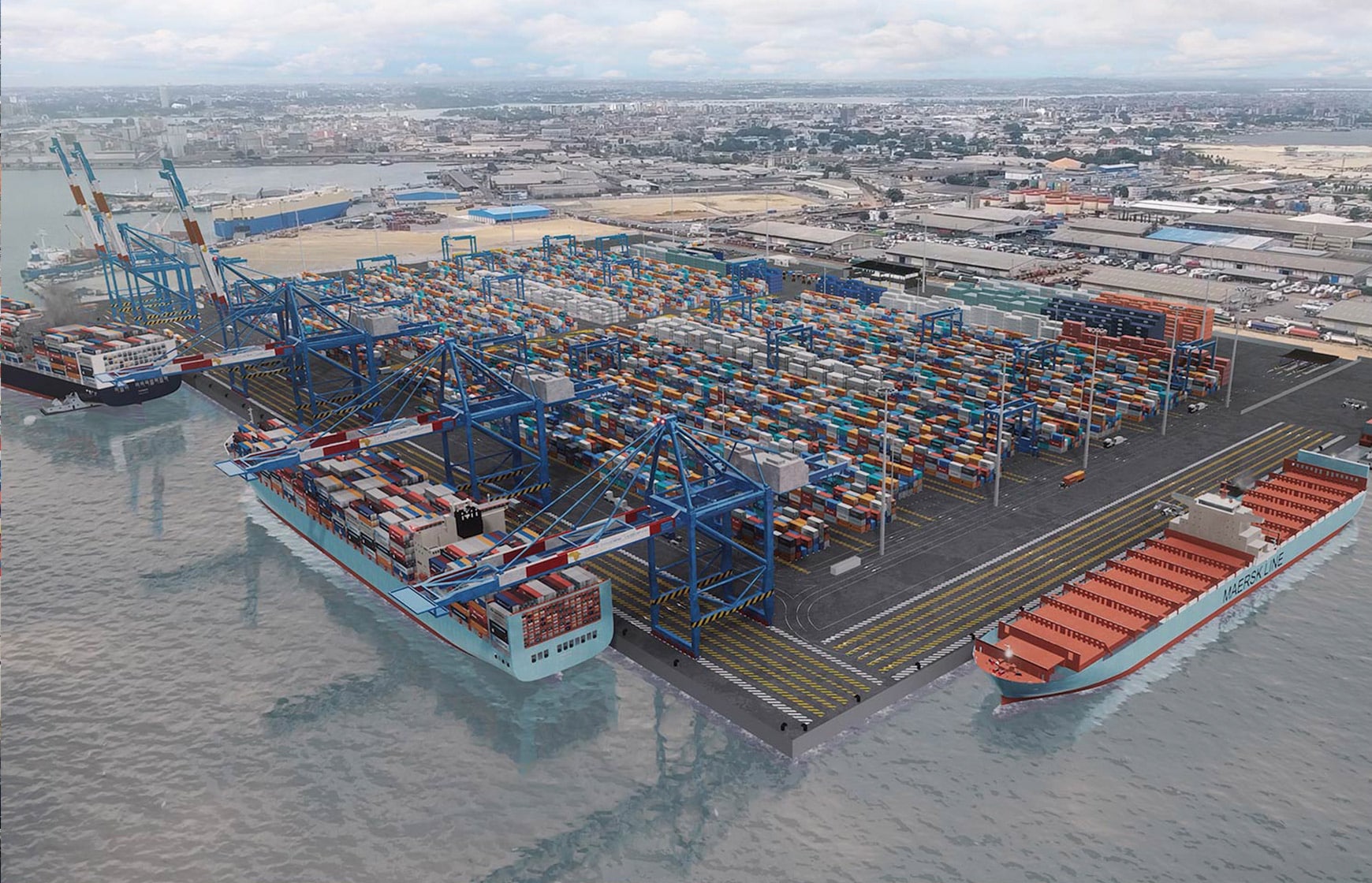
Our Terminal
The pioneering low-emissions Côte d’Ivoire Terminal (CIT) became operational in November 2022. Located adjacent to the existing Abidjan Terminal, it is the only terminal on Africa's west coast able to accommodate vessels with 16m draft, and enhances the competitiveness of the port with an additional 1.5 million TEU capacity.
Investment
The consortium — a joint venture between Africa Global Logistics Group and APM Terminals — invested 400m euro in the terminal construction and equipment. The terminal directly employs more than 400 people. At the end of the agreed concession period, assets will be returned to the Ports Authority ‘Port Autonome d’Abidjan’.
Côte d’Ivoire Terminal was formed in 2013. Phase one of the project was handled by the Port Autonome d’Abidjan (PAA), and consisted of the deepening and widening of the Vridi Canal access channel, and the reclamation of more than 45 hectares of land,for the creation of the new second container terminal, and an adjacent RoRo facility. An $80 million expansion at the existing Abidjan Terminal was already completed in 2015, increasing its annual container capacity from 800,000 TEU to 1.5m TEU.
Equipment & Facilities
Additional equipment is already included in future plans, once the terminal approaches an agreed volume threshold.
- Annual Capacity: 1.5m TEUs
- Area: 37.5 hectares
- Maximum draft:-16 metres (Existing Abdijan Terminal -11.5m)
- Quay: 1,100m
- Rail Yard: 2 x 300m tracks
- Reefer plugs: 1,100
- Electric post-panamax gantry cranes: 6
- Electric RTGs:13
- Tugmasters: 36 Tugmasters.
Decarbonisation
In 2023, CIT was awarded the Green Terminal label – 3 stars following the audit conducted by Bureau Veritas, based on eight pillars of the labelling process. These included work processes, construction of infrastructures that comply with international standards, acquisition of more environmentally-friendly handling equipment, waste management and employee training in good practices related to environmental issues. Operating with fully electric equipment, the terminal’s energy transition will continue with new clean energy equipment and monitoring of environmental indicators aimed at optimising and controlling the carbon impact of its activities. The terminal remains open to seeking partnerships for the supply of energy from renewable sources.
Economy
With the area of 37.5 hectares, CIT will offer greater capacity for handling of goods at the port of Abidjan and improve the flow of the country's imports and exports, while contributing to the development of local communities, not least by generating 450 direct jobs. It will also serve as a lever for the development of agricultural value chains and will notably benefit local cocoa, cashew and mango producers.
In recent years, Côte d'Ivoire has achieved a solid GDP growth rate, averaging 6-7% per annum. This has resulted in significant growth in import and export volumes. With the additional capacity provided by CIT, the terminal and the Port of Abidjan will position itself as a preferred gateway for surrounding landlocked countries such as Burkina Faso, Mali and Niger, which are currently forced to use less optimal routes due to capacity restrictions.
It will be the only terminal on the West African coast capable of handling larger new-generation ships of up to 14,000 TEU and 350m in length, making the terminal an attractive solution as a transshipment hub. With the latest generation container handling equipment it will help reduce the cost of handling cargo, and fuel trade growth and transhipment volumes. Significant transshipment volumes destined for Guinea (Conakry), Sierra Leone (Freetown) and Liberia (Monrovia) are expected.